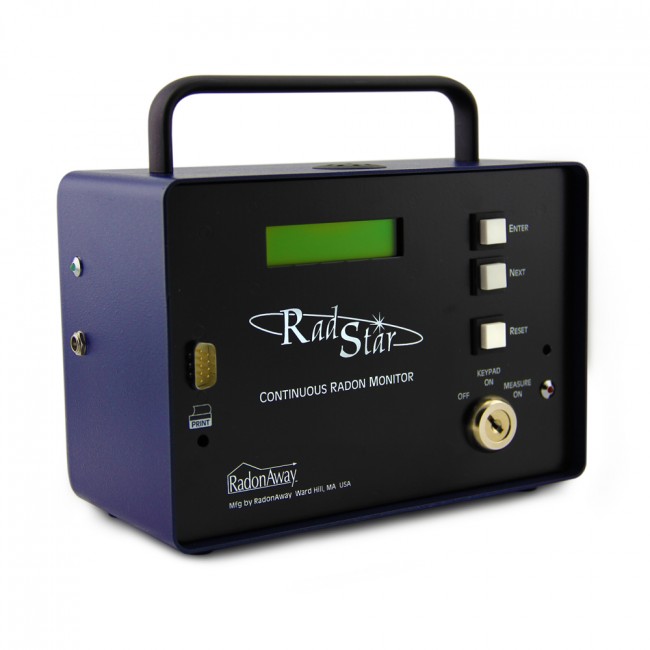
Frequently Asked Questions Regarding Radon
What is Radon?
Radon is a gaseous radioactive element, it is an extremely toxic, colorless gas; it is derived from the radioactive decay of radium.
Where does radon come from?
Radon-222 is the decay product of radium-226. Radon-222 and its parent, radium-226, are part of the long decay chain for uranium-238 which are present in almost all rock and all soil and water.
What is the debate on radon?
There is no debate about radon being a lung carcinogen in humans. All major national and international organizations that have examined the health risks of radon agree that it is a lung carcinogen.
Are we sure that radon is a health risk?
EPA already has a wealth of scientific data on the relationship between radon exposure and the development of lung cancer. Health authorities like the Centers for Disease Control (CDC), the Surgeon General, the American Lung Association, the American Medical Association, and others agree that we know enough now to recommend radon testing and to encourage public action when levels are above 4 pCi/L.
What is EPA’s Action Level for Radon and What Does it Mean?
Radon in air is ubiquitous (existing or being everywhere at the same time). Radon is found in outdoor air and in the indoor air of buildings of all kinds. EPA recommends homes be fixed if the radon level is 4 pCi/L (picocurries per liter, the expression of radon measurement) or more.
The average indoor radon concentration for America’s homes is about 1.3 pCi/L. It is upon this national average indoor level that EPA based its estimate of 21,000 radon-related lung cancers a year. The average concentration of radon in outdoor air is .4 pCi/L or 1/10th of EPA’s 4 pCi/L action level.
How often should I test/retest my home for radon?
Our general guidance (A Citizen’s Guide to Radon) – www.epa.gov/radon/pubs/citguide.html – suggests:
If your living patterns change and you begin occupying a lower level of your home (such as a basement) you should retest your home on that level.
Even if your test result is below 4 pCi/L, you may want to test again sometime in the future.
If you are buying a home, you should have a Radon Test done by a Professional Radon Tester.
If you are thinking of selling your home and you have already tested your home for radon, review the Radon Testing Checklist to make sure that the test was done correctly. If so, provide your test results to the buyer.
No matter what kind of test you took, a potential buyer may ask for a new test especially if:
• The Radon Testing Checklist items were not met;
• The last test is not recent, e.g., within two years;
• You have renovated or altered your home since you tested; or
• The buyer plans to live in a lower level of the house than was tested, such as a basement suitable for occupancy but not currently lived in.
A buyer may also ask for a new test if your state or local government requires disclosure of radon information to buyers.
As a precaution, EPA advises a second test if levels come back above 4 pCi/L. We then advise professional mitigation, using a practitioner with more sophisticated, precise, and expensive equipment.
How much can a radon mitigation system cost?
You have tested your home for radon, but now what? If you have tested your home for radon and confirmed that you have elevated radon levels, 4 picocuries per liter in air (pCi/L) or higher, our guidance can help you:
Select a qualified radon mitigation contractor to reduce the radon levels in your home.
Determine an appropriate radon reduction method.
Maintain your radon reduction system.
Radon reduction systems work. Some radon reduction systems can reduce radon levels in your home by up to 99 percent. Most homes can be fixed for about the same cost as other common home repairs. Your costs may vary depending on the size and design of your home and which radon reduction methods are needed. Get an estimate from one or more qualified radon mitigation contractors. Hundreds of thousands of people have reduced radon levels in their homes.
We offer some tips on what to look for to check the contractor’s work at www.epa.gov/radon/pubs/consguid.html – Checking Your Contractors Work.
Similar to a furnace or chimney, radon reduction systems need some occasional maintenance. You should look at your warning device on a regular basis to make sure the system is working correctly. It is a good idea to retest your home at least every two years to be sure radon levels remain low.
Feel free to contact us with questions for indoor air quality information including Radon, Mold and Particulate testing information. Let the professionals from our family help you and your family breathe easier!